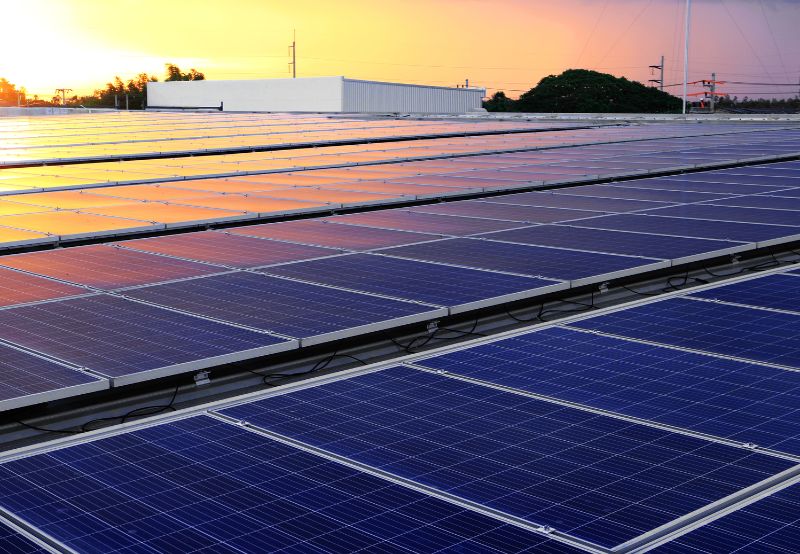WBERC Sets Net Billing and Gross Metering Feed-in Tariffs for Rooftop Solar
The order provides financial computations of the landed cost of power for the DISCOMs
August 28, 2025
Follow Mercom India on WhatsApp for exclusive updates on clean energy news and insights
The West Bengal Electricity Regulatory Commission (WBERC) has issued an order, determining the feed-in tariff for net billing and gross metering under the West Bengal Electricity Regulatory Commission (Grid Interactive Rooftop Solar Photovoltaic System for Prosumers) Regulations, 2025.
The Commission has already released tariff orders for all distribution licensees for the fiscal year 2025-26; hence, a separate order was required to finalize the feed-in tariffs for prosumers.
Determined Feed-in Tariffs
Based on these calculations, the Commission determined the feed-in tariffs for the financial year 2026 for different voltage levels across the four licensees. For extra high voltage, the tariffs are ₹3.73 (~$0.042)/kWh for West Bengal State Electricity Distribution Company (WBSEDCL), ₹4.42 (~$0.050)/kWh for Calcutta Electric Supply Corporation (CESC), and ₹4.19 (~$0.047)/kWh for India Power Corporation (IPCL).
For high voltage level, the tariffs are ₹3.89 (~$0.044)/kWh for WBSEDCL, ₹4.60 (~$0.052)/kWh for CESC, ₹4.36 (~$0.049)/kWh for IPCL, and ₹4.31 (~$0.049)/kWh for Damodar Valley Corporation (DVC).
For low and medium voltage, the tariffs are ₹4.37 (~$0.049)/kWh for WBSEDCL, ₹4.80 (~$0.054)/kWh for CESC, and ₹4.36 (~$ 0.049)/kWh for IPCL.
Financial Computations
The order provides detailed financial computations of the landed cost of power for each distribution licensee. The total power purchase cost was calculated at ₹201.1 billion (~$2.42 billion) for WBSEDCL, ₹31.30 billion (~$376.50 million) for CESC, ₹4.18 billion (~$50.27 million) for IPCL, and ₹5.82 billion (~$70.03 million) for DVC.
The cost of own generation was ₹2.14 billion (~$25.75 million) for WBSEDCL, ₹22.71 billion (~$273.24 million) for CESC, ₹382.205 million (~$4.60 million) for IPCL, and ₹48.71 billion (~$) for DVC. This resulted in an overall landed cost of power at ₹203.3 billion (~$586.14 million) for WBSEDCL, ₹54.0213 billion (~$2.45 billion) for CESC, ₹4.56 billion (~$54.86 million) for IPCL, and ₹54.5 billion (~$655.80 million) for DVC.
Regulatory Framework
The order was issued under Regulation 11 of the 2025 Rooftop Solar Regulations, which allows the Commission to fix the feed-in tariff either in the tariff order or by issuing a separate order. Once the tariff is agreed upon between the prosumer and the distribution licensee, it will remain valid for the entire useful life of the solar project.
For tariff determination, the Commission considered the landed cost of power at different voltage levels. The calculation included the distribution licensee’s power purchase cost, the cost of its own power generation, and the impact of transmission and distribution losses.
The normative loss levels were applied in line with the West Bengal Electricity Regulatory Commission (Open Access) Regulations, 2022. The state transmission utility losses were not considered separately as they were already accounted for in the overall energy balance.
The Commission emphasized that these tariffs were designed not to create any additional financial burden on distribution licensees while enabling prosumers to recover their solar installation costs.
As rooftop solar integration in West Bengal is still in its early stages, no additional cost impacts were factored into the tariff setting to keep the process simple and focused on promoting solar adoption in the state.
Last October, WBERC issued draft regulations for grid-interactive rooftop solar systems. The regulations provide a detailed framework for installing, operating, and managing rooftop solar systems.
Subscribe to Mercom’s real-time Regulatory Updates to ensure you don’t miss any critical updates from the renewable industry.
